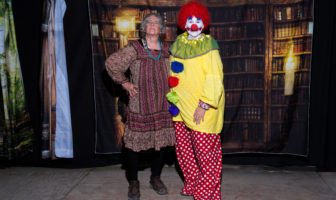Understanding the new shorthand.
By Clay Nichols


As a person older than 40, I may be almost alone in the opinion that digital slang, emoticons and acronyms are essential tools for today’s teens, signposts for communication composed at breakneck speed. For most adults however, digital shorthand is no cause to LOL (Learn Online Language). Fears are widespread among those born BC (Before Cable) that kids today are learning bad habits from their digital devices, dispensing with the rules of spelling and grammar, and hastening the end of literacy as we know it. Are gadgets compromising kids’ ability to read and write? Does the use of digital slang degrade kids’ abilities to use more formal modes of expression?
A recent poll of teachers by the Pew Internet & American Life Project probed exactly those questions. Not surprisingly, the more than 2,000 writing teachers polled expressed concern that informal digital shorthand may indeed be creeping into more formal types of writing. Like many parents, the teachers fretted that the brevity of digital communication might be impacting teens’ ability to sustain focus on longer writing projects. On the flip side, the teachers see digital technology encouraging their students to be more creative and expressive with language, more collaborative and aware of their audience. In the eyes of their writing teachers, today’s students act like little publishers, taking pride in the “content” they produce and seeing written expression as a potential source of popularity. Good status updates confer status.
Peer pressure to produce clever writing, even if it’s only 140 characters at a time, can’t be all bad IMHO (In My Holier- Than-Thou Opinion). My concern isn’t that digital communication will turn this generation of children into twitchy, attention-free, sub-literate goons, rather that it will turn them into thieving, emotionally fragile shut-ins. The real hazards of the speed and access to information that technology provides teens are miscommunication and failure to recognize ownership.
The founders of YouTube, Chad Hurley and Steve Chen, recently launched a new video sharing app. One thing that distinguishes their offering, MixBit, from rivals Vine and Instagram: All uploaded videos are available to all users to mix, mash and incorpo – rate into their own digital concoctions however they see fit. It’s the way of today’s teens. They have grown up on a digital commune where movies, TV shows and music flow freely between friends. Copyright? What’s that? This creates problems not only for artists and writers trying to scratch out a living, but also teens engaged in formal critical writing expected to attribute ideas and cite sources. Is it clear that this trend concerns me? If I have successfully conveyed my feelings, it may be because I knew they would appear in print. I took a little extra time to compose them.
But time is not something teens often expend on their digital communication. How could they attend to tone and nuance when, on average, they are blasting out 60 to 100 text messages a day? Kids can find themselves in a breakneck hurricane of messages without the many cues of face-to-face communication. Add hormones. Click “send.” So drama happens. Misunderstandings. Hurt feelings. Apologies. Retribution. Anger. Endless strings of communication. Kids report hating drama, and it is one reason that platforms that led themselves to text-based discussion threads (Facebook) are not keeping track with hipper forms of social media (tumblr, Twitter, Instagram).
How can kids spare themselves the drama of being misunderstood? 😉 By indicating tone with invented symbols. JK Letting each other know when they are just kidding. o_O And being playful and creative with written expression. Writing online using shortcuts, kids are making problems almost as fast as they are finding solutions. If you as a parent are still confused as to what this new shorthand means, translations can be found at wikipedia.org/wiki/list_of_emoticons. 🙂





